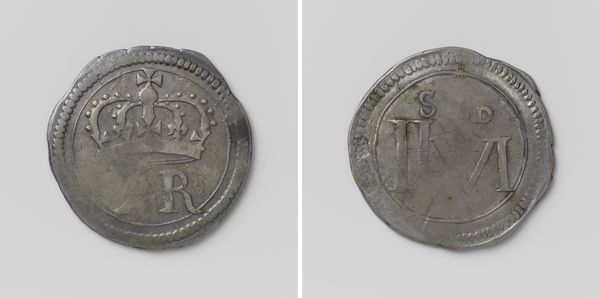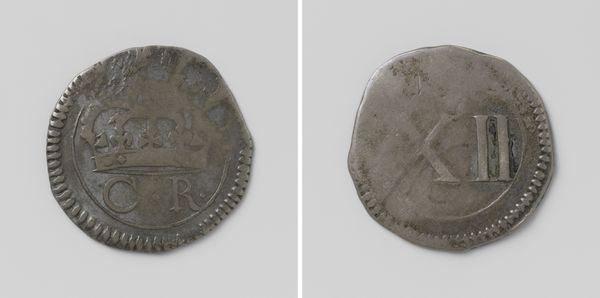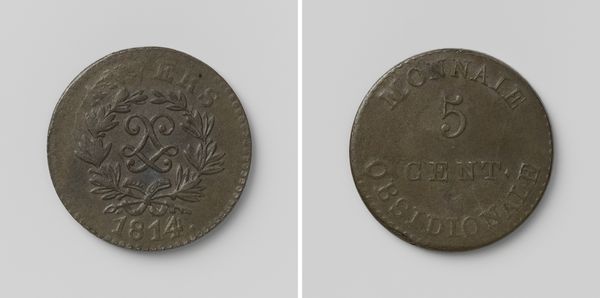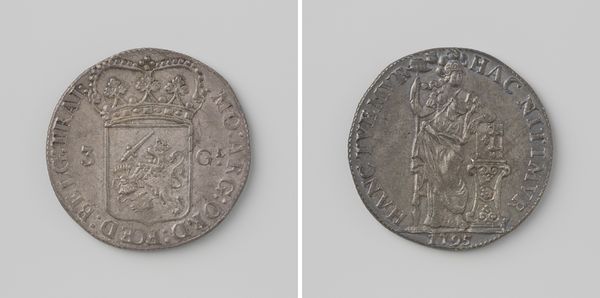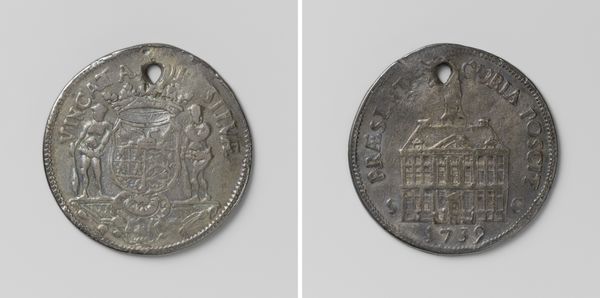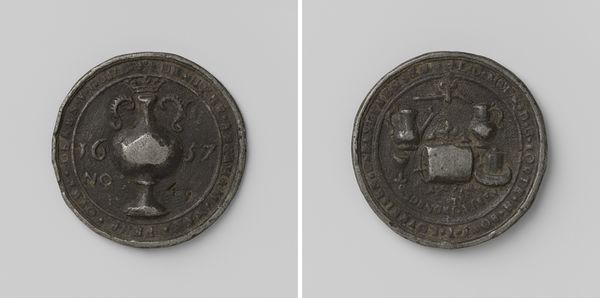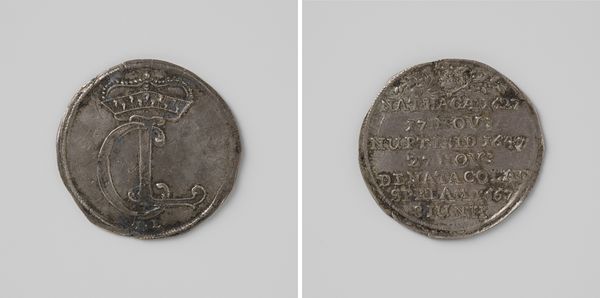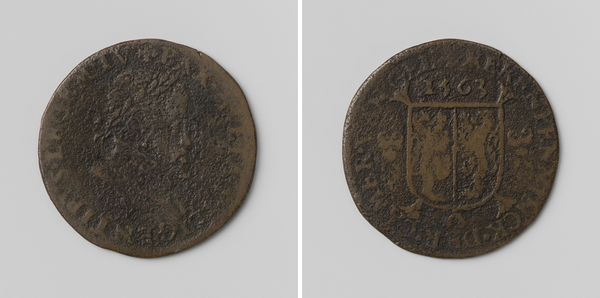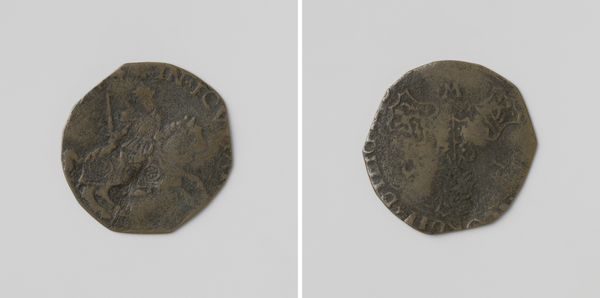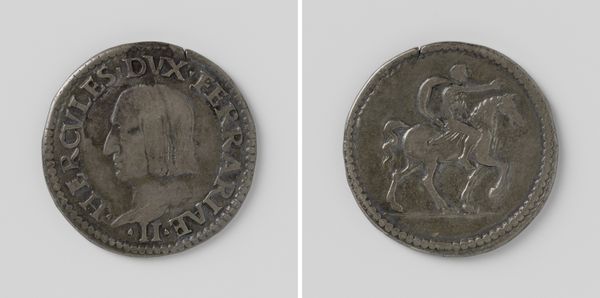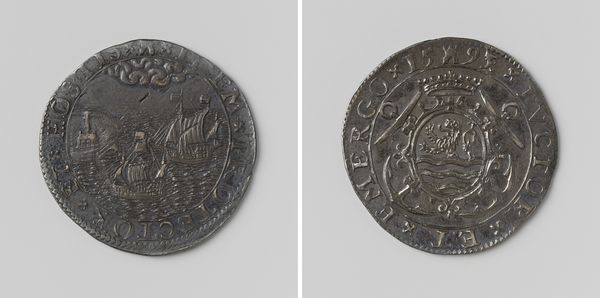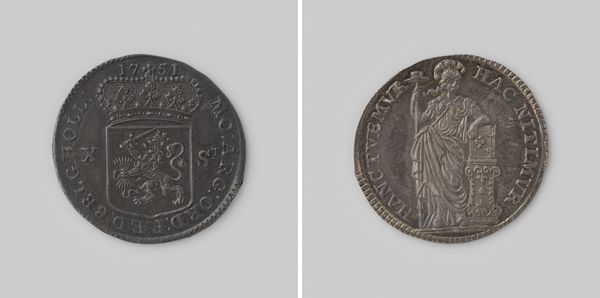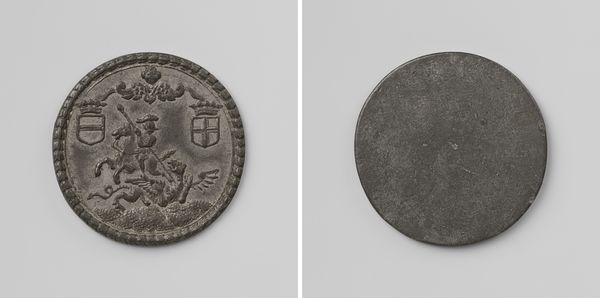
Vijf shilling, noodmunt van Karel I, koning van Engeland te Ormond geslagen van het door de ingezetenen opgebrachte zilver 1643
0:00
0:00
metal, relief, sculpture
#
portrait
#
metal
#
relief
#
geometric
#
ancient-mediterranean
#
sculpture
#
history-painting
#
miniature
Dimensions: diameter 4.3 cm, weight 29.71 gr
Copyright: Rijks Museum: Open Domain
Editor: This is "Vijf shilling, noodmunt van Karel I, koning van Engeland te Ormond geslagen van het door de ingezetenen opgebrachte zilver," a five shilling coin created in 1643. It’s interesting how the coin is slightly misshapen and looks to be made from roughly processed metal, and it's got quite simple imagery: a crown and the numeral ‘5.’ What’s your interpretation of a piece like this? Curator: It’s a fascinating object precisely *because* of its roughness. Think about the context: 1643, England embroiled in Civil War. The mint at Ormond, loyal to Charles I, was producing coinage from whatever silver could be gathered from supporters. Editor: So, the crudeness speaks to the socio-political climate? Curator: Precisely. It isn't just currency; it’s propaganda, a statement of Royalist authority in a time of upheaval. The crown isn't just a symbol of power, but also a call to action, a visible claim to legitimacy circulating within a fractured kingdom. What do you make of the stark, almost minimalist reverse side, with the large numeral V? Editor: It does feel less ornamental, more functional and direct compared to the King's crest and letters. Was that an artistic decision, or driven by necessity? Curator: More the latter, I suspect, given the context. Speed and ease of production would have been paramount, reflecting the urgency of the situation. Each coin represents sacrifice, literally silver offered up to fund the Royalist cause, pressed into service as a tool of war and a potent image of political resilience. It becomes a small, but weighted piece of material culture, doesn't it? Editor: It really does! Looking at it that way gives a whole new meaning to "money talks." Thank you for your insight. Curator: Indeed. Everyday objects can often hold the most extraordinary historical narratives.
Comments
No comments
Be the first to comment and join the conversation on the ultimate creative platform.
